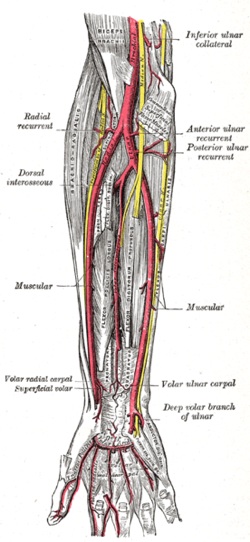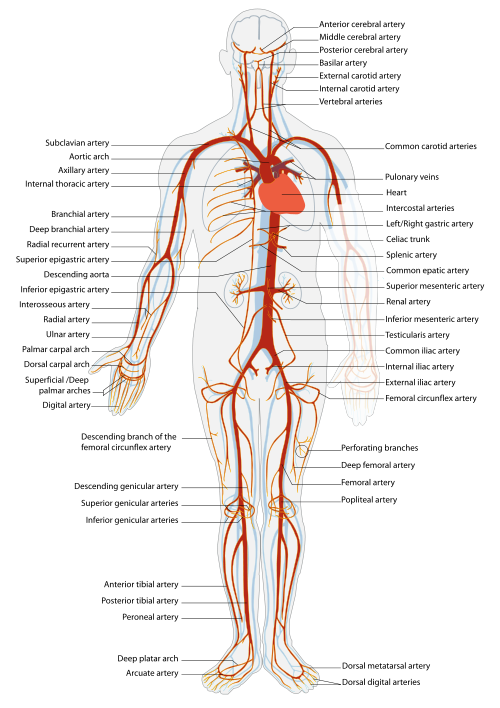
Arterial System
last authored: Dec 2009, David LaPierre
last reviewed:
Introduction
Arteries are the thick-walled vessels transporting blood from the heart to tissue beds. Their stiff but elastic walls allow them to stretch under proessure and provide constant blood pressure to capillaries .The aorta is roughly 2.5 cm in diameter, while arterioles have a diameter of 0.3 mm or less.
From the Aorta to the Arterioles
The enormous branching of the vasculature creates large differences in cross-sectional area and flow.
Vessels |
Number |
Aggregate cross-sectional area (cm2) |
Mean velocity (cm/s) |
|---|---|---|---|
Aorta |
1 |
4 |
21 |
Arteries |
8000 |
63 |
1.3 |
Arteriloles |
2 x 107 |
141 |
0.6 |
Capillaries |
1-4 x 1010 |
2827 |
0.03 |
Description of cellular wall structures of each of these structures.
Peripheral Distribution
- overview
- upper extremity
- lower extremity
- head and neck
- trunk
- pelvis
Upper Extremity

The arteries of the arm are important landmarks.
The radial artery is the most frequent site for arterial blood gases.
Important landmarks
Head and Neck
Pelvis
Control of Arterial Flow
Microvascular control ensures blood gets to the right spots. The sympathetic system can shut down blood flow to skeletal muscle and the skin in order to pool blood in the vital organs. Precapillary sphincters serve as gates to control blood flow into individual capillary beds.

